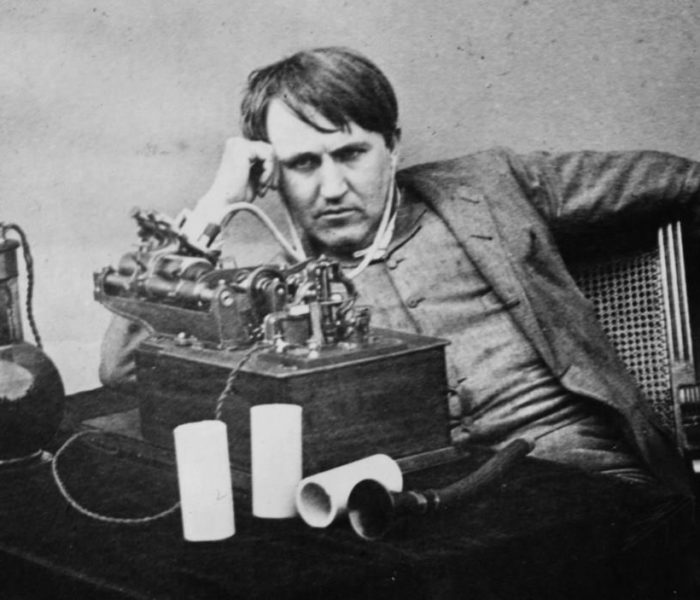Le saviez-vous ? Moi pas, avant de préparer cette chronique.
C’est à Franz Liszt, compositeur et pianiste (1811-1886) alors au seuil de sa gloire de soliste, que l’on doit, en 1840, l’invention du terme « récital » – à l’origine au pluriel. Avec ce néologisme aux connotations délibérément rhétoriques et poétiques, qu’il conçut avec le musicien anglais Frederick Beale et qu’il préféra aux expressions de « soliloque musical » ou de « monologue pianistique », Liszt allait révolutionner la forme du concert, au point de devenir l’un des premiers showmen modernes (1). Au siècle suivant, l’avènement de la musique enregistrée est venu consacrer la forme discographique du récital. Forme – qui n’est finalement rien d’autre qu’un programme proposé par un.e musicien.ne soliste ou accompagné.e au piano dans le cas d’un.e artiste lyrique – devenue un passage obligé de tout interprète, carte de visite visant à démontrer sa virtuosité autant que sa personnalité musicale, généralement à travers des jalons du répertoire. Ces dernières années me semble-t-il, on a vu toutefois se multiplier les programmes d’un nouveau type, privilégiant les échappées dans les marges du répertoire, se jouant des époques ou faisant la part belle aux « petits maîtres » et autres pièces méconnues. Ecrivant cela, je pense en particulier à quatre (très beaux) disques – on s’en tiendra ici aux pianistes :
The Transcendentalist (2014) d’Ivan Ilić :
le bien nommé Inland de Vanessa Wagner (2019) :
Good Night de Bertrand Chamayou :
Labyrinth de David Greilsammer
tous deux parus en 2020.
Certes, pas davantage que les programmes thématiques, les interprètes défricheurs n’ont jamais manqué depuis un siècle. Mais de plus en plus ces interprètes ont tendance aujourd’hui, me semble-t-il, à se dévoiler aussi, à travers ces disques, en tant que mélomanes. Un phénomène que l’on serait tenter de rapprocher de deux autres. D’une part ce que l’on peut appeler la « faillite du répertoire ». Avec la multiplication des références, en vinyle puis en CD, à quoi bon graver une énième lecture des Préludes de Chopin ou des Caprices de Paganini, se mesurer avec de plus en plus nombreuses générations de géants ? Pensons par exemple à Gabriel Dupont (1878-1914), compositeur qui devança Maurice Ravel au Prix de Rome avant de signer plusieurs merveilleux recueils pour piano de La Maisons dans les dunes aux Heures dolentes : confidentielles il y a encore 15 ans, ses œuvres font aujourd’hui l’objet de maintes références discographiques…
Cette désaffection (certes toute relative) est allée de pair avec, d’autre part, l’essor de l’écoute en streaming. On pourrait dire – sans nullement minorer en cela la grandeur des références discographiques susmentionnées – que la frontière est mince entre le récital et la « compilation ». Que ces recueils hétérogènes – quoique souvent homogènes thématiquement – sont une autre manière d’exister à l’heure où la musique s’écoute désormais en morceaux – le plus souvent désolidarisés, par la force des algorithmes, de l’œuvre (en l’occurrence : l’album) dont ils sont issus.
Insidieusement, aurait-on glissé du récital à la playlist ?
Cela ne veut nullement dire pour autant que de tels disques seraient désincarnés. Bien au contraire. De même que la playlist m’apparaît comme la manière la plus démocratique de proposer et partager une « vision » musicale, ils semblent constituer une nouvelle manière de réaffirmer la primauté de l’interprète. En tant que « curateur » d’abord : ces albums-récitals s’imposent en effet comme de véritables architectures sonores, échafaudées par un musicien non plus seulement virtuose, mais également dramaturge. Véritable alpha et oméga du Web 2.0, la « curation » : le fait d’opérer une sélection parmi l’infinité des contenus disponibles, ne serait-elle pas aujourd’hui une authentique manière, tout en révélant des œuvres méconnues, d’affirmer sa personnalité de mélomane ? sa subjectivité d”amateur autant que sa psyché d’interprète ?
« J’avais quinze ans, il me semble. Une nuit de printemps pourtant sereine, calme, quelques chants d’oiseaux nocturnes au loin. L’aboiement étrange d’un chien, peut-être perdu, résonnait comme un appel saisissant, une prémonition mystérieuse. J’ai voulu exprimer ce rêve en cherchant des pièces musicales. Chacune exprime une émotion, une question, un doute, une peur ou une envie ; tous ces moments qui ont marqué ce très long parcours aboutissant à ce programme, ce labyrinthe.» Ces mots de David Greilsammer au micro de Radio Classique disent bien la part d’intimité qui est en jeu à travers de tels projets. Désormais libérés de la pression de s’illustrer dans les œuvres iconiques du répertoire (même s’ils excellent à le faire par ailleurs), ces musiciens 2.0 rendraient ainsi pleinement justice à la notion d’« interprète-créateur », tant ils contribuent, en la réagençant, à faire écouter autrement la musique qu’ils servent, par la grâce d’une sensibilité qui se joue des époques et des frontières – des aires et des ères.
Pour outrepasser le seul champ des pianistes-solistes, je pense en écrivant cela à la démarche menée par un ensemble tel que La Tempête, notamment sur son disque Azahar (2017) : entrecroisant des pièces de musique médiévale et des partitions modernes signées Maurice Ohana (1913-1992) et Igor Stravinsky (1882-1971), ce disque m’a véritablement révélé le merveilleux Requiem de ce dernier ; peut-être justement parce qu’ils étaient « saucissonnés » entre des œuvres de Guillaume de Machaut (1300-1377), ses mouvements successifs m’ont semblé résonner avec d’autant plus de force, suivant une perspective plus ample, des reliefs plus saillants…
Et pour outrepasser le seul champ « discographique », je conclurai en me remémorant ce concert de l’ensemble ]h[iatus en trio auquel j’assistai au festival Sonorités de Montpellier de 2007. Des œuvres de musique contemporaine – James Tenney, Helmuth Lachenmann, Salvatore Sciarrino… – y étaient données, mais non plus dans la forme classique du « récital », c’est-à-dire entrecoupées des applaudissements rituels qui bien souvent ne contribuent qu’à rompre le charme. Au contraire elles s’enchaînaient, reliées par le truchement d’improvisations qui permettaient de passer de l’une à l’autre, par la grâce d’interprètes devenus littéralement passeurs. Ainsi, dans le domaine de la musique occidentale de tradition écrite aussi, il est aujourd’hui certains disques qui, comme certains concerts, accèdent au rang d’œuvres autonomes.
David Sanson



)



